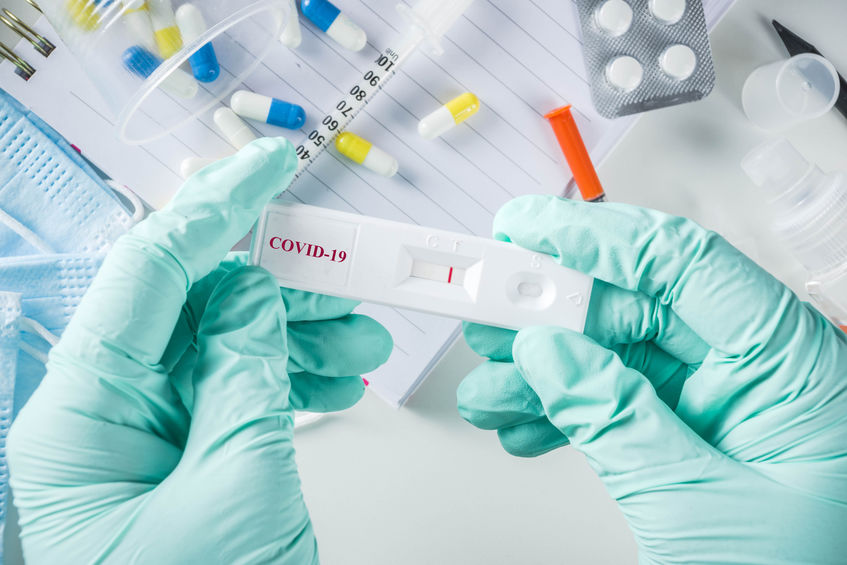Remember when the pivotal health objective was to “flatten the curve” — before the back to life and business goal post marker got moved to “beating the virus?”
We should now realize that COVID-19 isn’t going to entirely go away anytime soon — maybe never. Summer may provide a respite.
By late fall, probably not.
Although progress appears very promising, effective vaccines may or may not come online for many months, possibly years.
Treatments to dramatically reduce fatalities among most vulnerable groups; older populations — particularly those with existing health issues — might come sooner.
If so, that will be a huge relief.
Those who recover from coronavirus infection may develop lasting antibody protection.
Maybe community immunity resistance will happen, and it will burn out.
Or maybe it won’t.
The one certainty is that no one can really know when all of this disruptive social and economic pain will end.
It’s impossible to predict when America can expect to hear the “all clear,” notifying everyone that it’s finally okay to leave their homes; attempt to salvage distressed businesses; return to employment that no longer discriminates between “essential” and “non-essential” workers that provide essential paychecks; maybe join friends at a restaurant; and perhaps even let the kids hug grandma.
Meanwhile most of us realize that, at least for now, we will need to take sensible precautions to protect ourselves — and also to prevent unnecessary risks to others.
Armored against contagion, we social distance six feet away from others, wear face masks in public, forego friendly handshakes, disinfect public surfaces, and wash our hands religiously.
Nevertheless, even when we abide by the same rules, the virus doesn’t affect everyone equitably.
A great many among us who become infected — particularly those in younger population categories — won’t develop any significant illness symptoms, while a small minority of others have far more consequential concerns.
Vast numbers of people live in densely populated metropolitan viral transfer “hot spots” where social distancing is challenging. There are even more, however, that don’t.
Some more fortunate people have retirement incomes, savings, or can work from home. Others, including lots of lower-income formerly working single-parent families, don’t and can’t. Many furloughed workers have good reason to worry that the jobs they previously depended upon will be permanent viral casualties.
Yes, the COVID-19 pandemic is inordinately cruel, not only to disproportionately impacted individual livelihoods and lifestyles, but also to our national economic and social wellbeing that underpins shared hopes for future recovery.
Debates now rage regarding when, and how, to relieve variously mandated living and business restrictions in ways that balance intrinsically co-dependent public safety and economic health priorities.
Fair and effective governance inherently requires making tough choices with incomplete information. We count on our elected leaders to make wise big picture judgement calls based upon separate and disconnected expert source puzzle parts.
Although moving too fast to restore normal social and business activity might increase viral casualties, there can also be no assurances that such infectious resurgences won’t inevitably occur either way.
Delaying too long, the other hand, will inevitably cause more people to die from postponed medical exams and surgeries, domestic violence and child abuse, and isolation and unemployment -related suicides.
Other lives will be ruined by forced bankruptcies, foreclosures, and mounting debt.
Government policy decisions on our behalf are painfully complicated and difficult.
I believe most of us recognize this, and whenever possible, will cooperate out of intelligent self -interest and community concern.
Commercial establishments, large and small, are already instituting extensive facility hygiene, spatial separation and limited occupancy arrangements, and a variety of other responsible measures to protect customers and employees.
They understand that such safeguards are essential to restore clientele confidence.
Responsible individuals will choose to work, shop, eat, and conduct other activities in places where they feel safe.
Those with special health concerns can be expected to moderate their options accordingly.
For some, such as myself, this will warrant sheltering in place for a while longer.
Just like everyone else, I must take primary responsibility for my own behavior and safety.
Returning back to the business of living means that we must relearn how to trust one another to act rationally in ways that mitigate threats to themselves and everyone else.
After all, safe social distancing is something we practice every time we drive at rapid speeds on crowded freeways, trusting that other drivers won’t crash into our lane.
It’s high time now to get back on the road to becoming the vital, industrious, prosperous America that we so recently knew.
It’s still there.
This article originally appeared at NewsMax
